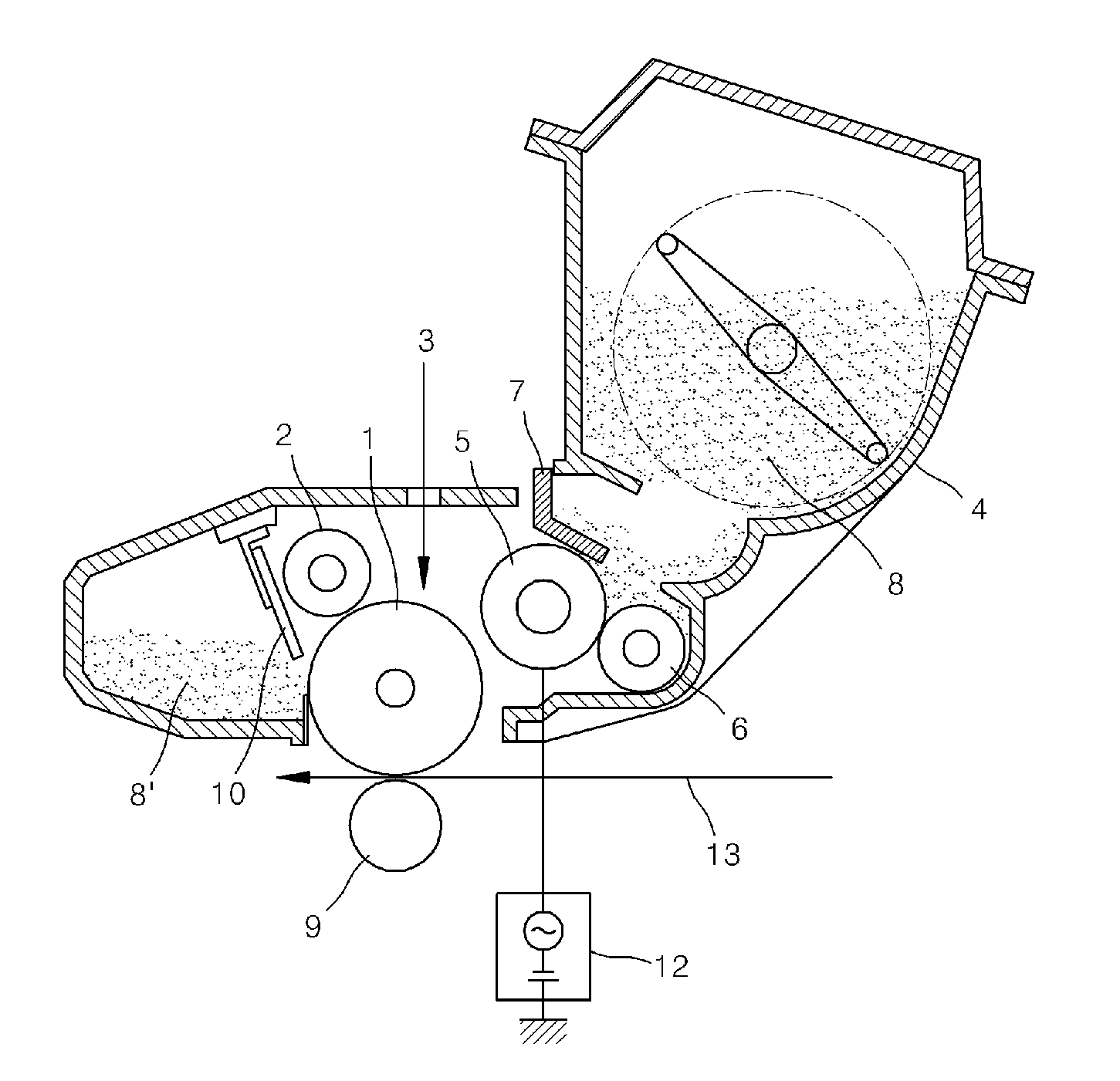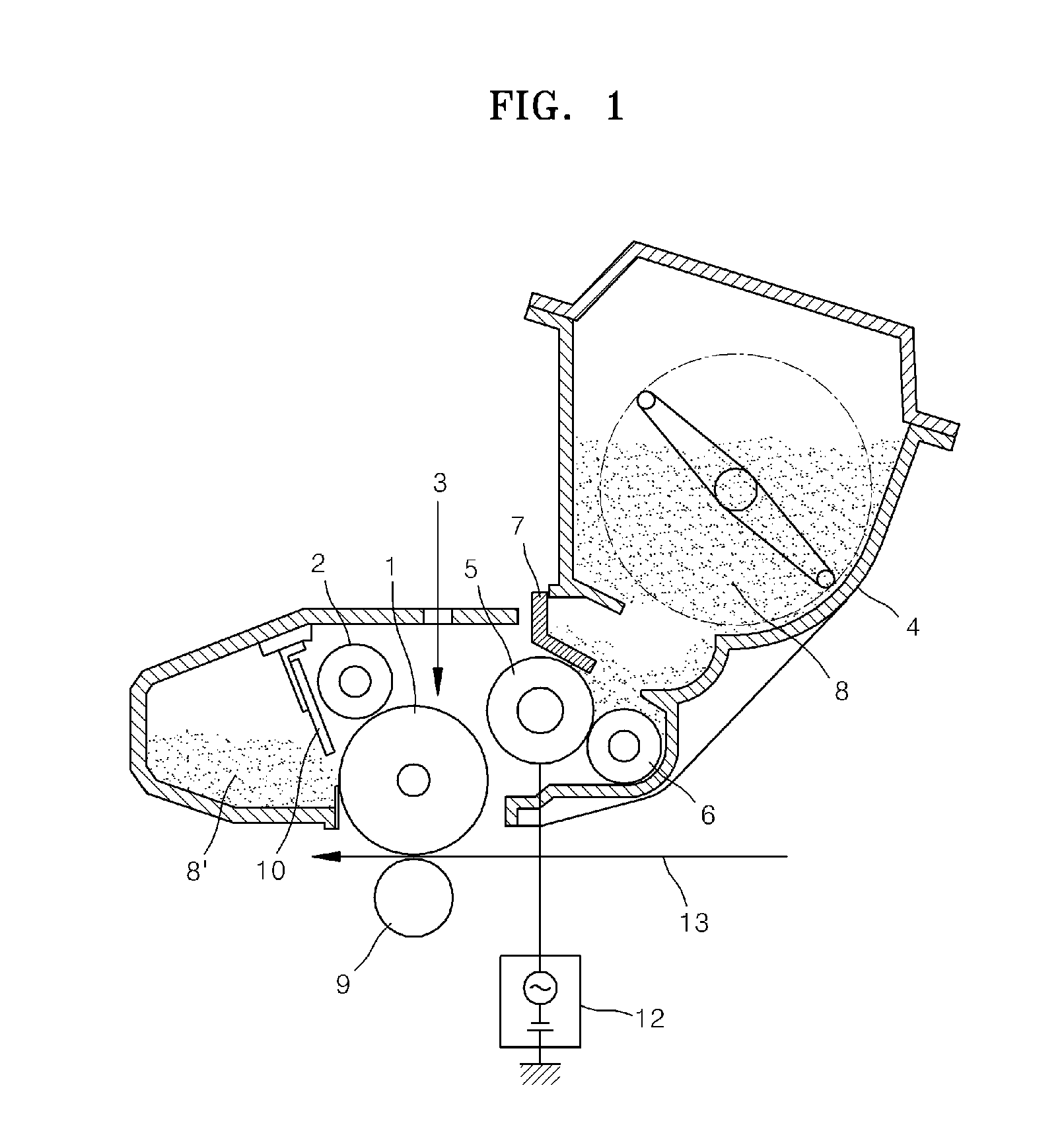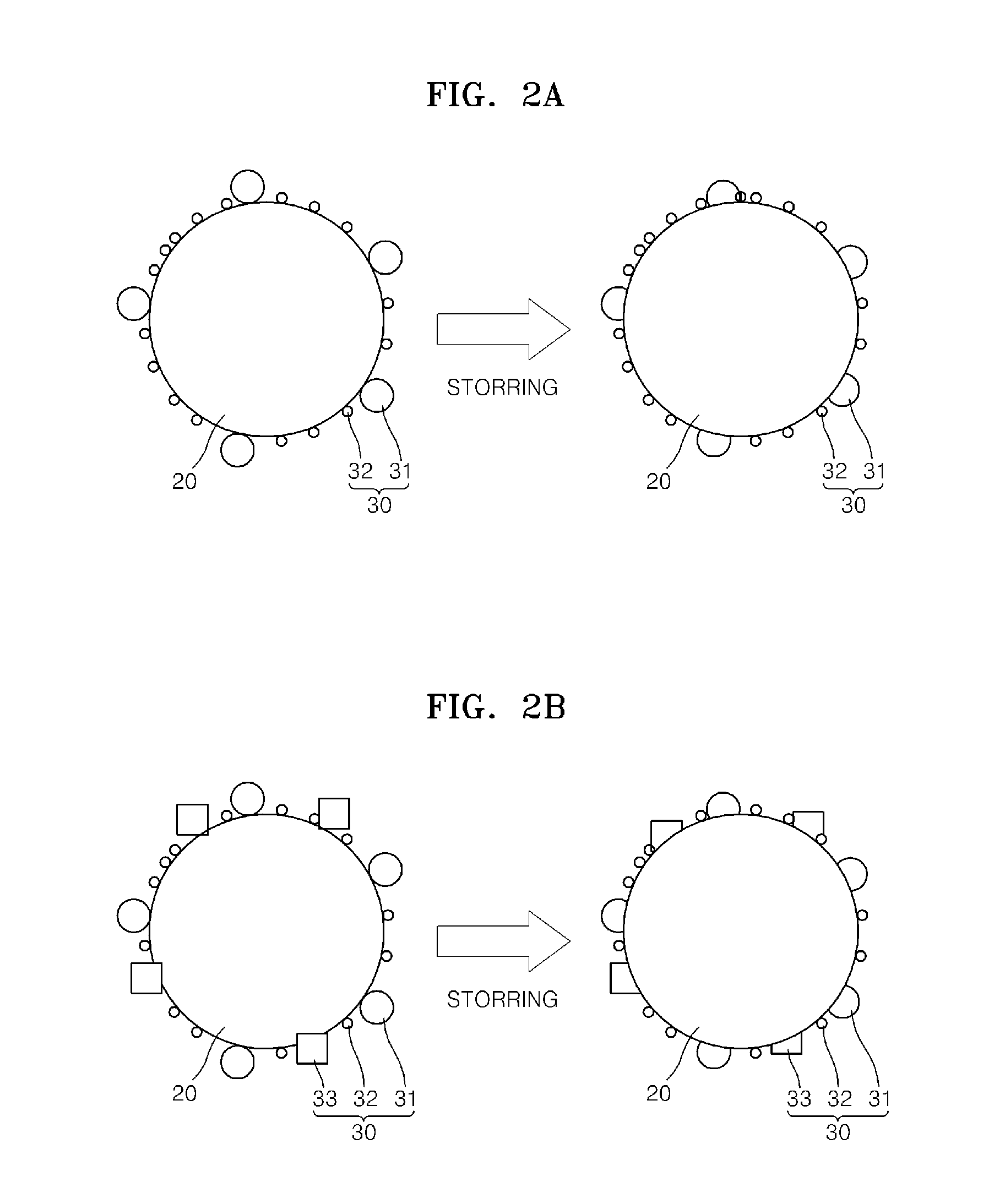Electrophotographic toner and electrophotographic image forming apparatus using the same
a technology of electrophotographic image and toner, which is applied in the direction of electrographic process apparatus, instruments, developers, etc., can solve the problems of reducing developability and transferability with time, affecting the quality of the image, etc., to achieve excellent transfer efficiency, excellent image density, and high charge stability
- Summary
- Abstract
- Description
- Claims
- Application Information
AI Technical Summary
Benefits of technology
Problems solved by technology
Method used
Image
Examples
examples 1-1 to 1-15
and Comparative Examples 1-1 to 1-8
Preparation of Cyan Parent Toner Particles
[0101]460 g of polyester resin (molecular weight: 2.5×104), 25 g of phthalocyanine pigment blue 15:3, 5 g of a quaternary ammonium salt, and 10 g of low molecular weight polypropylene (weight average molecular weight: 3.5×103˜4.5×103) were mixed using a Henschel mixer. The mixture was melt-mixed at a temperature of 165 in a twin screw extruder and pulverized using a jet mill pulverizer, and the pulverized particles were classified in an air classifier to obtain parent toner particles having a volume average particle diameter of 7.0 μm.
[0102](Addition of External Additives)
[0103]External additives shown in Table 1 below were added to the parent toner particles prepared using the melt-mixing pulverization method described above in a mixing ratio as described in Table 2 below to prepare toner according to each of Examples 1-1 to 1-15 and Comparative Examples 1-1 to 1-8. The addition of the external additives w...
examples 2-1 to 2-15
and Comparative Examples 2-1 to 2-8
Preparation of Cyan Parent Toner Particle
[0104]Preparation of Latex Particle
[0105]0.5 g of sodium dodecyl sulfate (SDS), as an anionic surfactant, was mixed with 400 g of ultra pure water from which oxygen was removed to obtain an aqueous solution. The solution was heated to 80 in a reaction chamber. When the temperature of the solution reached 80, an initiator solution prepared by dissolving 0.2 g of potassium persulfate in 30 g of ultra pure water was added thereto. After 10 minutes, 105.5 g of a mixture including 81 g of styrene, 22 g of butyl acrylate, and 2.5 g of methacrylic acid was added thereto for about 30 minutes. After 4 hours of reaction, the heating was stopped and the mixture was naturally cooled to obtain a seed solution. 30 g of the seed solution was mixed with 351 g of ultra pure water, and the mixture was heated to 80. The resultant was mixed with 17 g of ester wax, 18 g of styrene monomer, 7 g of butyl acrylate, 1.3 g of methacr...
PUM
 Login to View More
Login to View More Abstract
Description
Claims
Application Information
 Login to View More
Login to View More - R&D
- Intellectual Property
- Life Sciences
- Materials
- Tech Scout
- Unparalleled Data Quality
- Higher Quality Content
- 60% Fewer Hallucinations
Browse by: Latest US Patents, China's latest patents, Technical Efficacy Thesaurus, Application Domain, Technology Topic, Popular Technical Reports.
© 2025 PatSnap. All rights reserved.Legal|Privacy policy|Modern Slavery Act Transparency Statement|Sitemap|About US| Contact US: help@patsnap.com



